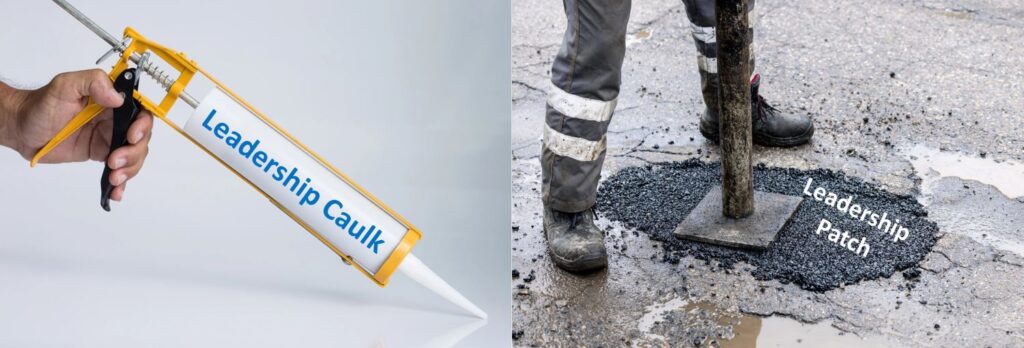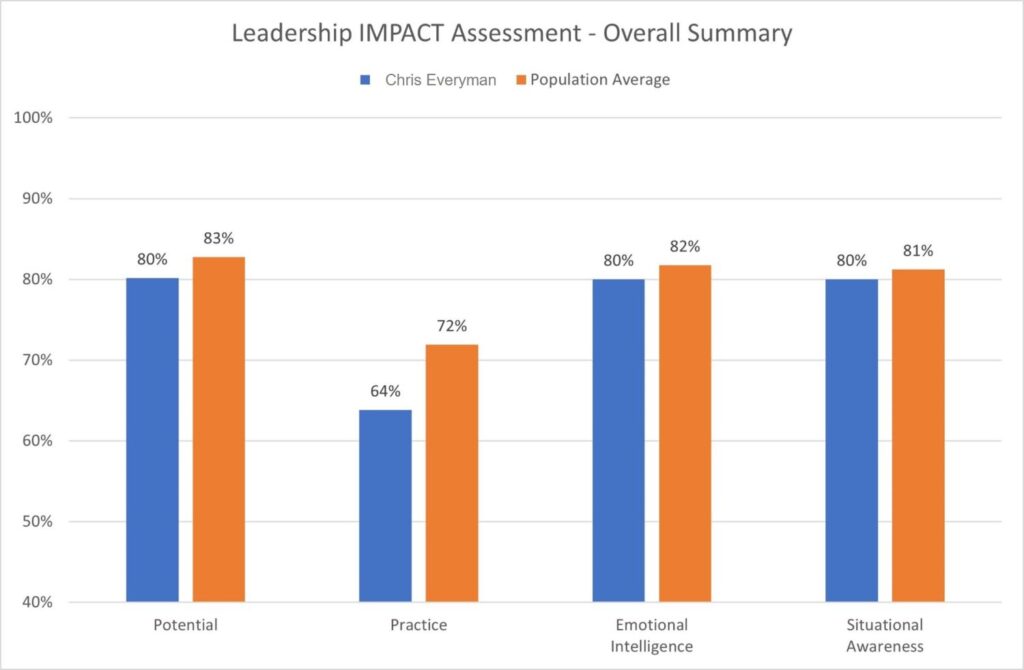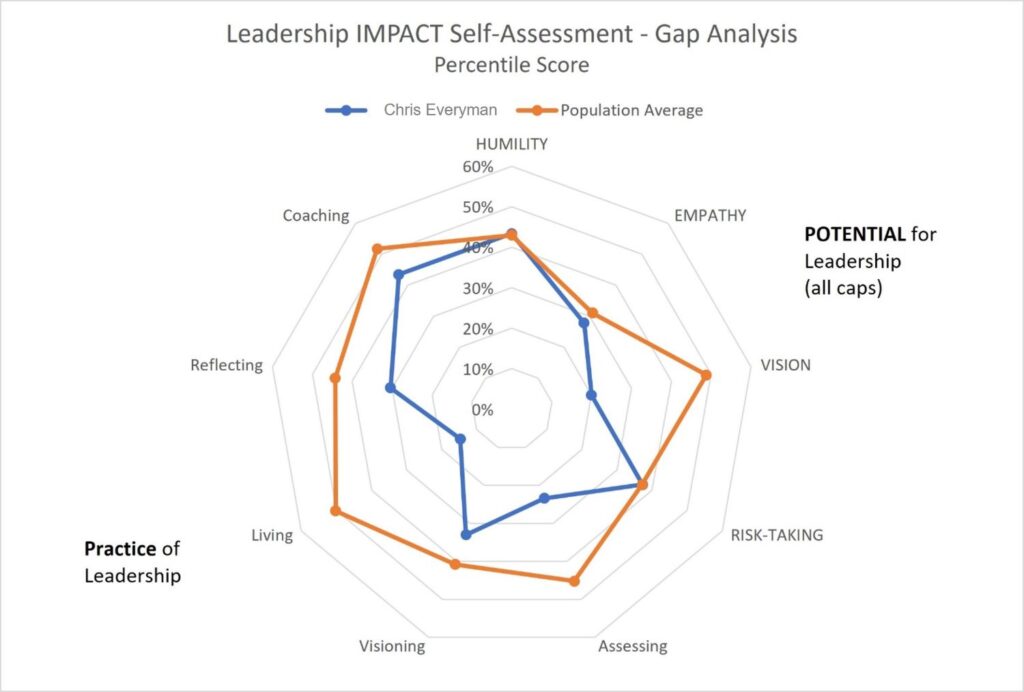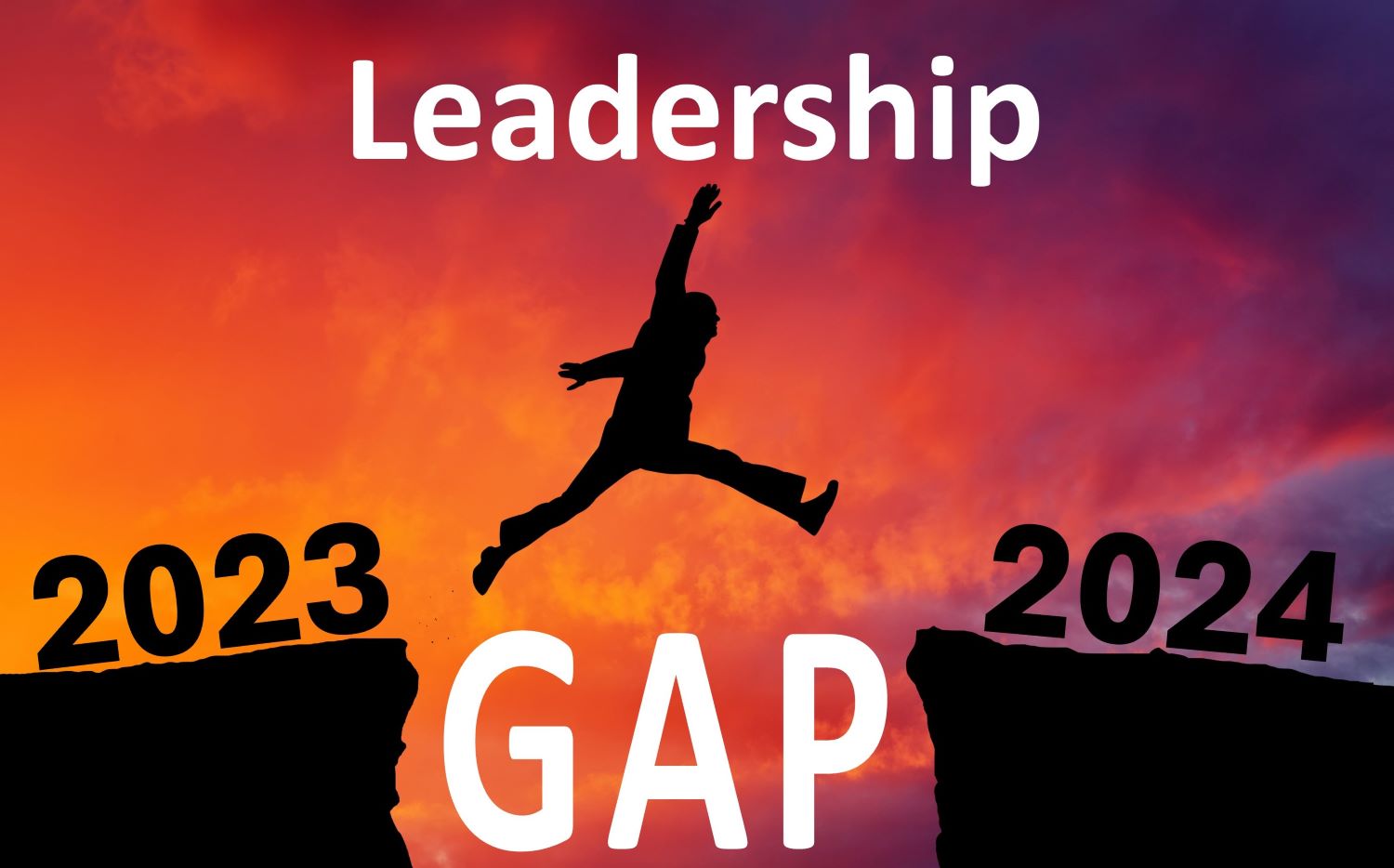Everyone has leadership gaps. The key to being or becoming a successful leader is to identify those gaps and either repair or compensate for them. These gaps can be small and repaired with some ‘caulk’ or huge needing ‘pothole repair compound’. If left unattended, a small gap can grow into a huge one for the leader. Do you know which one(s) you have?

In our assessments, we focus on 9 dimensions of leadership behavior that can result in gaps in an individual’s practice of leadership. They are:
- Humility
- Empathy
- Vision
- Risk-Taking
- Assessing
- Visioning
- Living
- Reflecting
- Coaching
These dimensions are summarized into 2 categories, the Potential for leadership (numbers 1 through 4) and the Practice of leadership (numbers 5 through 9).
Potential for Leadership
Leadership potential is determined by the innate leadership qualities of humility, empathy, vision and risk-taking a person possesses which provides them with a higher leadership ceiling. These are qualities that have proven to produce the best leaders. Some of this can be improved with training, but a solid floor must exist for the leader to reach their full potential.
Potential leadership improves through increased awareness of the innate leadership qualities and the individual embracing them in their daily leadership practice.
Practice of Leadership
With an established floor and ceiling, the Leader needs to practice their leadership by following a leadership process every day. Leadership improvement only occurs when the learn, practice and review process is utilized. It will not occur using the “one and done” approach of most leadership training programs where an individual takes a course and goes back to work without a personal leadership strategy or follow up coaching.
Leadership practice improves through an elevated focus on the daily practice of leadership.
Contextualizing Results
The results of the analysis provides the individual and/or organization with a snapshot of the person’s leadership behaviors at the time of the assessment. To provide immediate context to the leader’s behaviors, their score is compared to the population average of all participants who have taken the assessment over the last 8 years. The population average includes results from C-Level executives to managers.

In the Overall Summary chart, the individual’s scores are compared to the summary Potential for Leadership and Practice of Leadership, as well as derived Emotional Intelligence and Situational Awareness values. In the chart below, the individual is below the population average in all summarized categories.
The results are visualized in a radar chart with Potential for Leadership dimensions in all caps. The blue line represents the dimension percentile score for the individual and the orange line represents the dimension percentile score for the total population average.

In the example below, the individual is at or below the population average on all nine dimensions, reflecting many areas for improvement, or gaps to close. This visual provides more insight to the categories presented in the summary above and reveals the specific areas that should be addressed during the debriefing session.
Other Gaps
In addition to identifying individual leadership gaps, leaders must identify team leadership perception gaps and organization level gaps. Team gaps identify the difference in leadership perception between the leader and their team and/or peers. Organization level gaps identify the differences between an individual and their organization level peers, i.e., C-Level, Vice Presidents, etc. We will take a deep dive into these gaps in future newsletters. Teams and organizations that utilized this analysis have found the results very illuminating.
“With Leadership, Anything is Possible!”
WEEKEND READS
I Manage Someone Who Wants More Praise From His Team, Inc. Magazine, January 2, 2024. How do you manage someone who gets frustrated that their team doesn’t acknowledge their input/skills/expertise. They want their team to give him positive feedback and validation. Even great managers don’t often hear their team say, “Thanks for the great job you do managing me.”
5 Ways Leaders can set Themselves up for Success in 2024, Fast Company, December 27, 2023. As we look ahead to 2024, focus not just on yourself but also on your team, organization, clients/customers, and suppliers to proactively set yourself up for success.
Three “Bad Boss” Habits to Avoid in 2024, INSEAD, January 4, 2024. Despite our best efforts to lead with empathy, authenticity and clarity, we often find ourselves slipping back into bad habits that can frustrate our teams and harm our organizations. When emotions run high, we become susceptible to falling into these three mindsets that undermine our effectiveness and erode trust within our teams.



